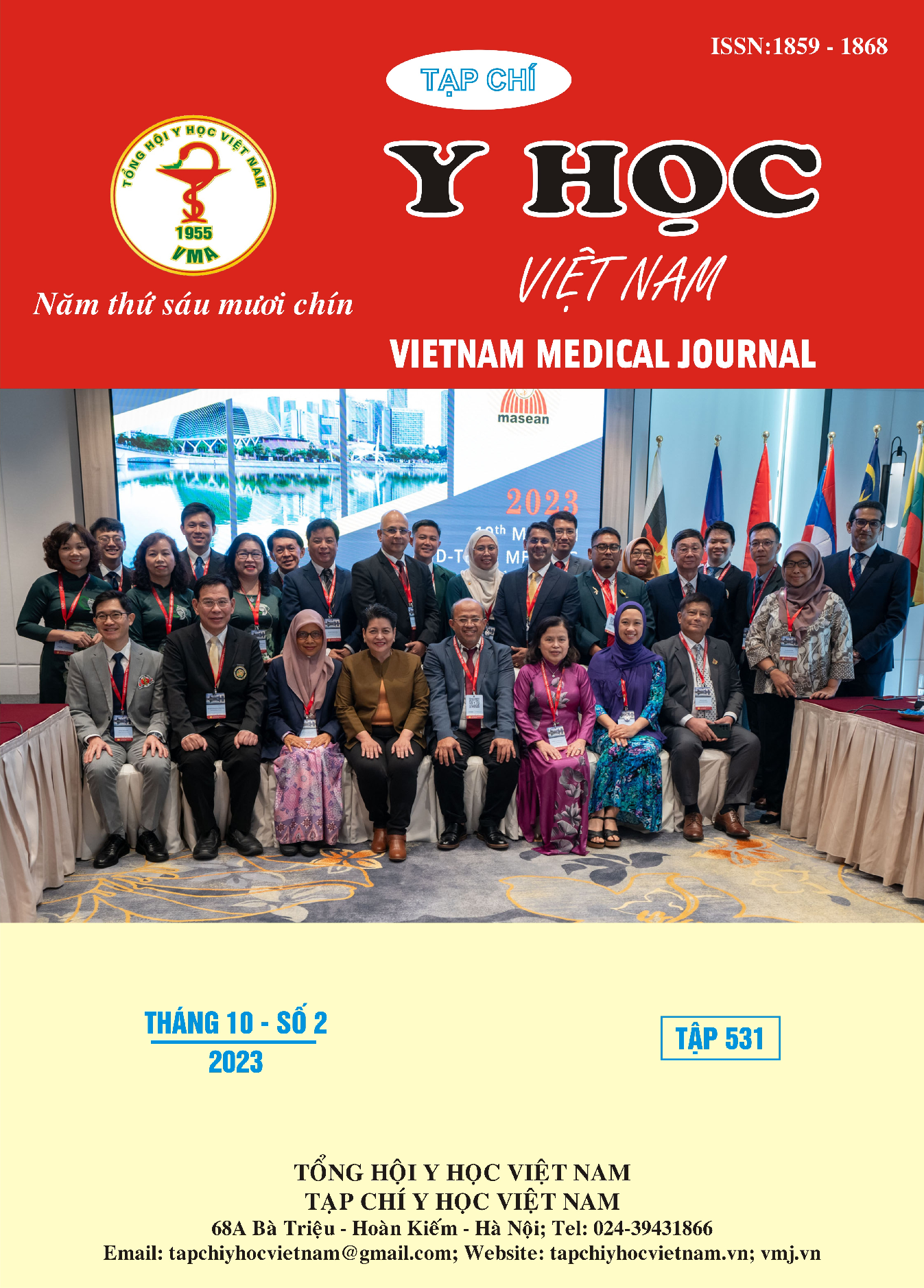RESEARCH ON IMAGING CHARACTERISTICS OF UTERINE LEIOMYOMAS ON ULTRASOUND AND MAGNETIC RESONANCE IMAGING
Main Article Content
Abstract
Objective: To describe the imaging characteristics of uterine leiomyomas on ultrasound and magnetic resonance imaging (MRI) in patients with uterine fibroids treated at Military Hospital 103, Military Hospital 105, and Tam Anh General Hospital. Subjects and Methods: A retrospective study was conducted, describing cross-sectional images of patients with treated uterine leiomyoma at Military Hospital 103, Military Hospital 105, and Tam Anh General Hospital. Results: The majority of patients had a single tumor, accounting for 50%. The most common location of the tumor was within the uterine muscle, with a prevalence of 72%. The most common tumor weight was below 100g, representing 38%. The commonly encountered tumor diameter was 50-100mm (78%). On ultrasound, the tumors usually appeared hypoechoic (64%) and vascular (74%). On MRI, the tumors frequently showed decreased signal intensity on T1-weighted images (56%) and decreased signal intensity on T2-weighted images (44%). The majority of tumors exhibited increased vascular signal on contrast-enhanced MRI, accounting for 74%. Conclusion: The majority of patients had a single tumor located within the uterine muscle. Most tumors had a weight below 100g and a diameter ranging from 50-100mm. Tumors typically appeared hypoechoic on ultrasound and showed decreased signal intensity on T1-weighted and T2-weighted images. Tumors often exhibited increased vascular signal on both ultrasound and contrast-enhanced MRI.
Article Details
Keywords
uterine leiomyoma, ultrasound, magnetic resonance imaging.
References
2. Spies J.B., Coyne K., Guaou Guaou N., et al. (2002) “The UFS-QOL, a new disease-specific symptom and health-related quality of life questionnaire for leiomyomata,” Obstet. Gynecol., vol. 99, no. 2, pp. 290–300.
3. Ravina J.H., Ciraru-vigneron N., Aymard A., et al. (1999) “Uterine artery embolisation for fibroid disease: Results of a 6 year study,” Minim. Invasive Ther. Allied Technol., vol. 8, no. 6, pp. 441–447.
4. Carpenter T.T., Walker W.J. (2005) “Pregnancy following uterine artery embolisation for symptomatic fibroids: a series of 26 completed pregnancies,” BJOG Int. J. Obstet. Gynaecol., vol. 112, no. 3, pp. 321–325.
5. Zimmermann A., Bernuit D., Gerlinger C., et al. (2012) “Prevalence, symptoms and management of uterine fibroids: an international internet-based survey of 21,746 women,” BMC Womens Health, vol. 12, p. 6.
6. Lippman S.A., Warner M., Samuels S., et al. (2003) “Uterine fibroids and gynecologic pain symptoms in a population-based study,” Fertil. Steril., vol. 80, no. 6, pp. 1488–1494.
7. Mara M., Maskova J., Fucikova Z., et al. (2008) “Midterm Clinical and First Reproductive Results of a Randomized Controlled Trial Comparing Uterine Fibroid Embolization and Myomectomy,” Cardiovasc. Intervent. Radiol., vol. 31, no. 1, pp. 73–85.
8. Nguyễn Xuân Hiền (2011) Nghiên cứu ứng dụng phương pháp nút động mạch tử cung trong điều trị u cơ trơn tử cung. Luận án Tiến sĩ Y học. Trường Đại học Y Hà Nội.
9. Holub Z., Mara M., Kuzel D., et al. (2008) “Pregnancy outcomes after uterine artery occlusion: prospective multicentric study,” Fertil. Steril., vol. 90, no. 5, pp. 1886–1891.


